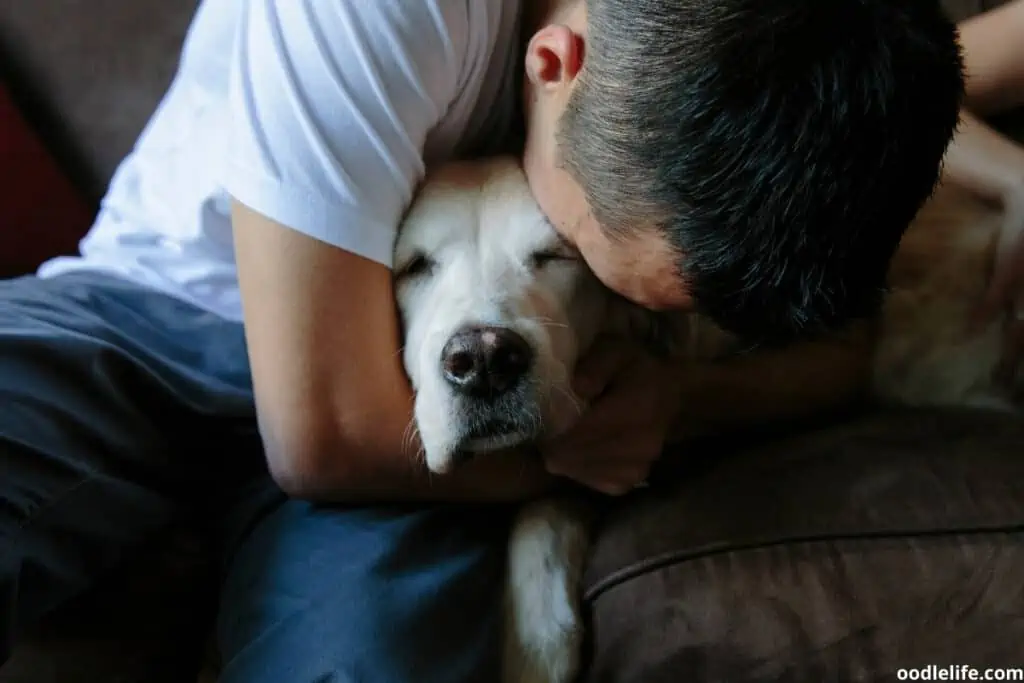Answered: When To Put Diabetic Dog Down?
Wouldn’t it be wonderful if dogs could speak? It’d certainly make training easier! Imagine all the hilarious conversations we could have.
It would also make caring for a sick dog much simpler. Imagine being able to ask your dog how they are feeling—what a relief that would be.

Unfortunately, our dogs can’t tell us when they’re in pain or unhappy, so we must do our best to interpret for them. If your dog has an incurable disease like diabetes, you want to make their life the best it can be. Sadly, part of making their life comfortable means deciding when it’s time to put them down.
What Is Canine Diabetes?
As with humans, there are two types of canine diabetes: insulin-deficient and insulin-resistant.
A dog with insulin-deficient diabetes has a pancreas that doesn’t produce enough insulin or fails to produce it at all. Insulin-deficient diabetes is the most common type in dogs. Dogs with this type of diabetes require daily insulin shots.
A dog with insulin-resistant diabetes produces sufficient insulin, but their body reacts incorrectly to it. This type of diabetes is more common in older and overweight canines. Pregnant female dogs can also develop temporary insulin-resistant diabetes.
Insulin controls how glucose in the blood is absorbed by the rest of the body. Dogs, like humans, use glucose for energy. Without insulin, glucose stays in the blood, leading to high blood sugar levels, or hyperglycemia.
Dogs with hyperglycemia are prone to other health issues.
When glucose isn’t available for energy, the body starts to break down fat for energy instead. This releases ketones into the bloodstream. At low levels, the release is called ketosis and is harmless.
If ketone levels rise, however, they can reach dangerously high levels and trigger a state called ketoacidosis.
Ketoacidosis is a medical emergency in which the body becomes more acidic and can’t maintain proper fluid and electrolyte levels. When electrolyte levels shift, it can cause heart palpitations and abnormal muscle function. Left untreated, ketoacidosis is fatal.
Canine diabetes, without treatment, can lead to urinary tract infections, kidney failure, blindness, seizures, and ketoacidosis.

What Are the Symptoms of Canine Diabetes?
Diabetes may present itself in various ways, depending on the dog. Here are a few of the major things to watch out for if you suspect your dog might have the disease.
- Increased urination
- Increased thirst and/or appetite
- Depression
- Urinary tract infections (UTIs)
- Loss of sight
- Bloodshot eyes
- Non-healing wounds
- Unexplained tissue damage
- Weight loss
- Obesity
- Nerve damage in legs

Which Dogs Are Most Likely to Get Diabetes?
Doctors don’t know the cause of canine diabetes, but there are factors that put some dogs more at risk than others.
- Age. Diabetes is more likely to develop in dogs aged five and older.
- Gender. Unspayed female dogs are twice as likely to develop diabetes.
- Genetics. A dog whose parents were diabetic is more likely to become diabetic.
- Obesity. Overweight dogs are more likely to develop Type 2 diabetes.
- Pancreatitis. Repeated inflammation of the pancreas can lead to long-term damage.
- Cushing’s Disease. The body produces steroids, which can lead to diabetes.
- Steroidal medications. Long-term use can lead to diabetes.

What’s the Average Lifespan of a Dog with Diabetes?
Medical professionals previously thought that a diagnosis of diabetes was an immediate death sentence for a dog. However, in recent years, studies have shown that dogs can live with diabetes if it is well-managed.
If your dog survives the first few months after diagnosis, chances are that they will live at least a few more years if you carefully manage their condition. Most canines live two years after diagnosis. However, your dog could potentially live another five to eight years with the right care.

How Do I Know When It’s Time?
Truthfully, this is a question that only you and your vet can answer. It’s a difficult conversation, but talking to your vet is a crucial step you can take when deciding how and when to euthanize your dog.
There’s a wonderful tool called the Quality of Life Scale that can help you assess your dog’s current quality of life and decide whether it’s time for euthanization or not. Also known as the H5M2 scale, it gives you a tangible way to measure each area of your dog’s life. Doing so can help you to look objectively at how your dog is doing.
The H5M2 scale is named for the seven areas of your dog’s life that it evaluates. Those areas are hurt, hunger, hydration, hygiene, happiness, mobility, and more good than bad days. You give each area a score from 0–10, depending on how your dog is doing that day.
The total number from adding up all the individual scores represents how your dog feels overall.
For example, if your dog can eat their regular food, you’d give the hunger category a score of 10. If they can’t eat regular food but can consume blended food, you might give it a score of seven or eight. If they can’t eat food at all, you would give it a score of zero.
A score of 70 on the H5M2 scale is a perfect score. It means your dog’s quality of life is ideal. A score below 35 indicates that the quality of your dog’s life is not sufficient to continue sustaining it.
If you think your dog is dying, don’t wait and prolong their suffering. The decision to end a dog’s life is an incredibly difficult one, but it’s one that people often say they wish they’d made sooner. As hard as it is, part of being a responsible dog owner is knowing when to let your best friend go.

Disclaimer
I’m not a vet. I wrote this article to help you learn about canine diabetes and research your options. You should always talk to your vet before making any medical decisions for your dog.